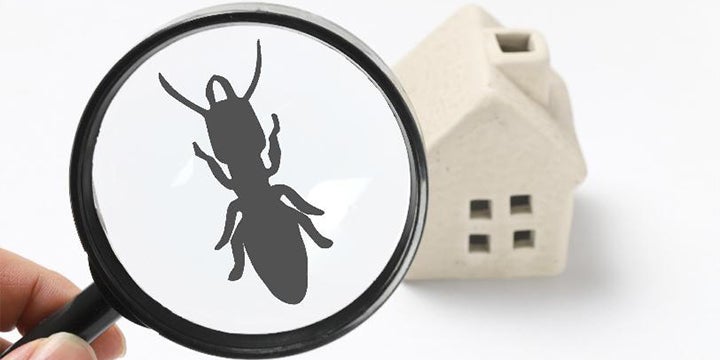Social Media Tips to Keep Your Pest Control Business Connected

No matter what industry you’re in, it’s clear that since launching in the late 2000s, social media has changed the way we conduct business – forever. Social media helps share your brand, provides free and paid advertising, and allows you to create ads to target and remarket to local prospects specifically. Social media has also changed the way we connect with our customers. No longer does a consumer have to call into a dedicated customer service line and wait on hold or drive directly to the business itself if they want to talk to someone. Social media provides a direct line of communication with your customers and enables you to respond quickly – especially to complaints. Most importantly, social media allows you to grow your pest control business. Almost all social media accounts are free, and in addition to your website, it will help you establish your brand and advertise your pest control services. Since billions of people are using social media, it’s important to ensure you establish your presence. Here are a few tips to ensure your success:
1. Find Your Target Audience
You may be asking, “Does a target audience really matter?” and the answer is “Yes.” While it’s true that billions of people are using social networks, it doesn’t mean that every one of them is in the market for pest control services. Also, narrowing your audience will give you a better idea of where to spend your marketing dollars to make the most out of your budget.
In order to narrow your search, you can start by compiling data on your current customers to create a buyer persona. A buyer persona is a semi-fictional representation of your ideal customer based on demographics such as age, location, language, gender, education, hobbies, marital status, and whether or not they have children. You should also consider which social network platforms your target audience is using. For example, Instagram appeals to the 18-29 demographic. This might not be where you want to spend your time selling residential pest control services. Facebook and LinkedIn are a better option where your likely to find more people aged 30 and over (those likely to be homeowners).
That said, you don’t want to be too specific with your targeting. For example, if your targeting is too broad, then you pay more for poor-performing ads and lower engagement rates. If your targeting is too specific, then only a small group of people might see you. Having a good balance will ensure your paid ads are effective.
2. Make a Plan
Now that you’ve narrowed down your audience and which social networks to use, don’t be tempted to start posting at random. It makes good business sense to have a social media plan. If you don’t have a plan, you don’t have a goal. If you don’t have a goal, you can’t measure your results. Ultimately, every social media post should be designed with the purpose of fulfilling your business objectives.
Having a plan means developing a social media calendar. A well-thought-out calendar will save you time from scrambling at the last minute trying to find ideas on what to post. You should plan posts and how they will be structured months in advance. You can always pivot as new things arise, but it’s best to have a strategy in place as to how you’re going to approach each quarter.
Avoid posting on trends or news unless they directly affect your brand. Most importantly, be authentic. It doesn’t hurt to show your personality. Think about the brands that have attracted you on social media. Having a social media presence not only promotes your pest control services but enables you to connect and engage with your customers and prospects.
3. Get Your Timing Right
What you say is just as important as when you say it. Posting at the right time can make all the difference in getting the most significant impact on your social media posts. Certain times of the day and certain days of the week have been known to work best for pest control companies looking to attract new customers. Below are the recommended times to post in order to get the most engagement:
If you’re using Facebook, it’s best to post on Wednesday afternoons between 3:00 p.m.—5:00 p.m., 1:00 p.m.—4:00 p.m. on Thursday and Friday afternoons, and 12:00 p.m.—1:00 p.m. on the weekend.
For Twitter, it’s best to post from 12:00 p.m.—6:00 p.m on weekdays. Tweets that are posted around 5:00 p.m.—6:00 p.m. generally receive the highest amount of retweets.
Instagram engagement stays relatively level throughout the week, though it is generally highest on Mondays and lowest on Sundays. It’s best to schedule Instagram posts on weekdays during regular business hours, but you will tend to see the best results around 3:00 p.m.—4:00 p.m.
For LinkedIn, while weekdays during business hours are considered optimal posting times, the specific periods of 7:00 a.m.—8:00 a.m. and 5:00 p.m.—6:00 p.m. Tuesday through Thursday and 10:00 a.m.—11:00 a.m on Tuesdays saw the best levels of clicks and shares.
It’s important to consider the day of the week when you post. For example, people tend to respond to funny and upbeat content on Fridays because they’re in a good mood and ready for the weekend.
4. Analyze Your Results
As stated above, it’s important to have a goal so you can measure your results. If you don’t measure your results, how will you know what’s working and what isn’t? Luckily, social networks provide a ton of data, so we know how well our posts perform. That said, when you’re looking at your number of followers, page views, likes, shares, impressions, and clicks, it can all seem overwhelming.
There are a number of analytic tools to help, such as Google Analytics, Hootsuite, Facebook Analytics, Buffer, and Sprout Social, to name a few. These tools help evaluate how your posts are performing and who’s engaging with them. When you’ve identified popular posts, such as a tweet or Facebook post, you can turn them into a more in-depth piece of content. Analyzing your posts and ads over time will give you a good idea as to how successful your campaign was and how your social strategy is performing overall.





